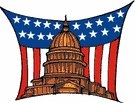By Phyllis Naegeli

|
The Powers of the Judicial Branch
By Phyllis Naegeli |

|
 |
Create Weekly Reading Books
Prepare for an entire week at once! |
 |
The 1890's
|
 |
American Government Worksheets | edHelper.com
|
 |
United States Constitution
|
 |
Social Studies
|
 |
United States
|
|
|
|
|
 | Fifty States Theme Unit |
 |
Document Based Activities |